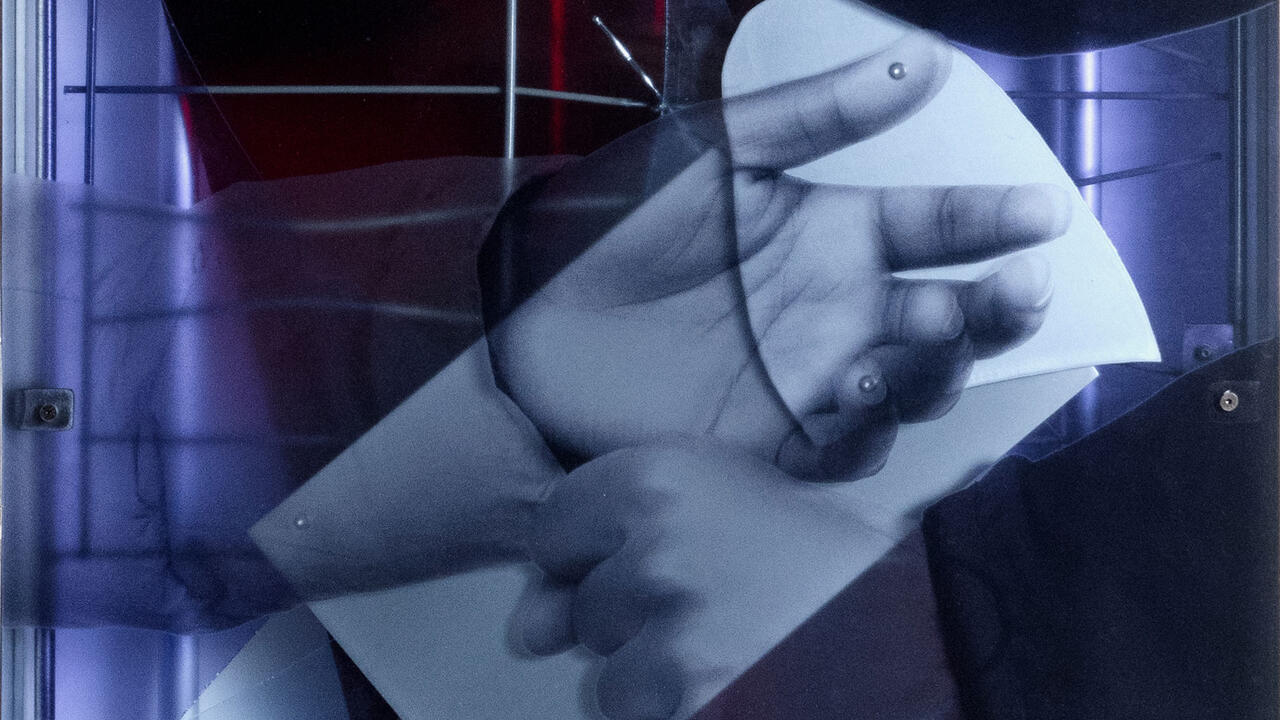Barbara Bloom
Galleria Raffaela Cortese, Milan, Italy
Galleria Raffaela Cortese, Milan, Italy

All the works in Barbara Bloom’s latest exhibition are about seeing, not seeing well, or not seeing at all. Coincidentally, I visited the show with an eye floater zigzagging across my field of vision, which added another layer to Bloom’s reflections on vision-related impairments. She explores how an intact capacity for sight may coincide with an eclipse of reason or how, vice versa, reduced sight allows the development of other forms of comprehension. To quote from John Berger’s classic Ways of Seeing (1972): ‘The relation between what we see and what we know is never settled.’ What we see changes according to time, age, culture, ideology, censorship – you name it. Bloom’s resistance to a simplified notion of vision and her sense that ‘everyone is blinded’ (as she writes in the small brochure that accompanies the exhibition) are powerful antidotes to the scopophilia induced by the digital infosphere and the current myth of ‘total visibility’. By contrast, Bloom deliberately points to blind spots, to the dark side of things we are either not capable of seeing or are not allowed to perceive.
One of the most revealing texts included in Bloom’s book As it were … So to speak (2015) – a volume that translates onto the printed page the artist’s 2013 solo show at the Jewish Museum in New York – is an interview with Claude Lanzmann. In it, the director of the 1985 Holocaust documentary Shoah – which comprises 10 hours and 13 minutes of testimony from survivors, witnesses and perpetrators, with no archival footage – explains: ‘At the core of Shoah lies an absence; it is haunted by those images that we never see.’
The exhibition is divided across two of Galleria Raffaella Cortese’s separate spaces on the same street. ‘Works for the Blind’ occupies a street-level venue with large windows that flood the space with light in the daytime. On the walls hang seven pieces from Bloom’s eponymous early series (1985–89), each bringing together a black and white archival image on the subject of magic and illusionism, and an accompanying quote on the nature of seeing – typed once over an image in Braille and presented again in a miniature text set in 5pt font, printed white on black. Given the impossibility of the majority of viewers fully comprehending the information provided, these pieces suggest a large margin for indeterminacy and, potentially, fabrication. For instance, I Saw in a Photograph … (1988) juxtaposes a picture of a levitating egg, cupped by a woman’s hands, with an excerpt from Ludwig Wittgenstein’s Remarks on Colour (1950), where the author describes his experience of imagining the original colours of a scene ‘despite the fact that everything was depicted simply in lighter and darker shades of the photographic paper’.
The second exhibition space, a large basement, presents ‘The Weather’, a new set of seven, hand-tufted woollen carpets that have been inscribed with long texts in Braille. Their raised dots have been created by surgically trimming down the rug’s pile – essentially, they are bas-reliefs. Even if you are unable to read what the carpets say, it’s hard to resist the temptation to run your hand over their tactile surfaces, as if to verify their content by touch. All the carpets are monochromatic, made using seven different shades of a colour that Bloom defines as ‘grey-greenblue, reminiscent of clouds and sky’. It is fitting, then, that these pieces are not installed on the ground, but suspended on small pedestals set at different heights, making them look like flying carpets or floating sheets. The aquamarine – a signature colour for Bloom – that tints the walls up to eye level creates a feeling of immersion. Weather, that quintessentially neutral topic of small talk, as well as one now inextricably linked with the increasing threat of global warming, is the common element of the carpet texts: six are descriptions of atmospheric phenomena and their impact on individual moods, taken from different writers and quoted in the works’ titles (for example, There was a desert wind blowing that night. (Chandler); Under a sky of flawless blue. (Gide); Some flawed place in the iron dark of the world. (McCarthy), all 2015). One carpet is a self-portrait in the form of a report on the climatic conditions in Los Angeles on 11 July 1951 at 2am – the exact date and time of Bloom’s birth (Weather Statistics at Birth (BB), 2015). I can’t help but think how inadequate data is as a way of describing our lives.






















